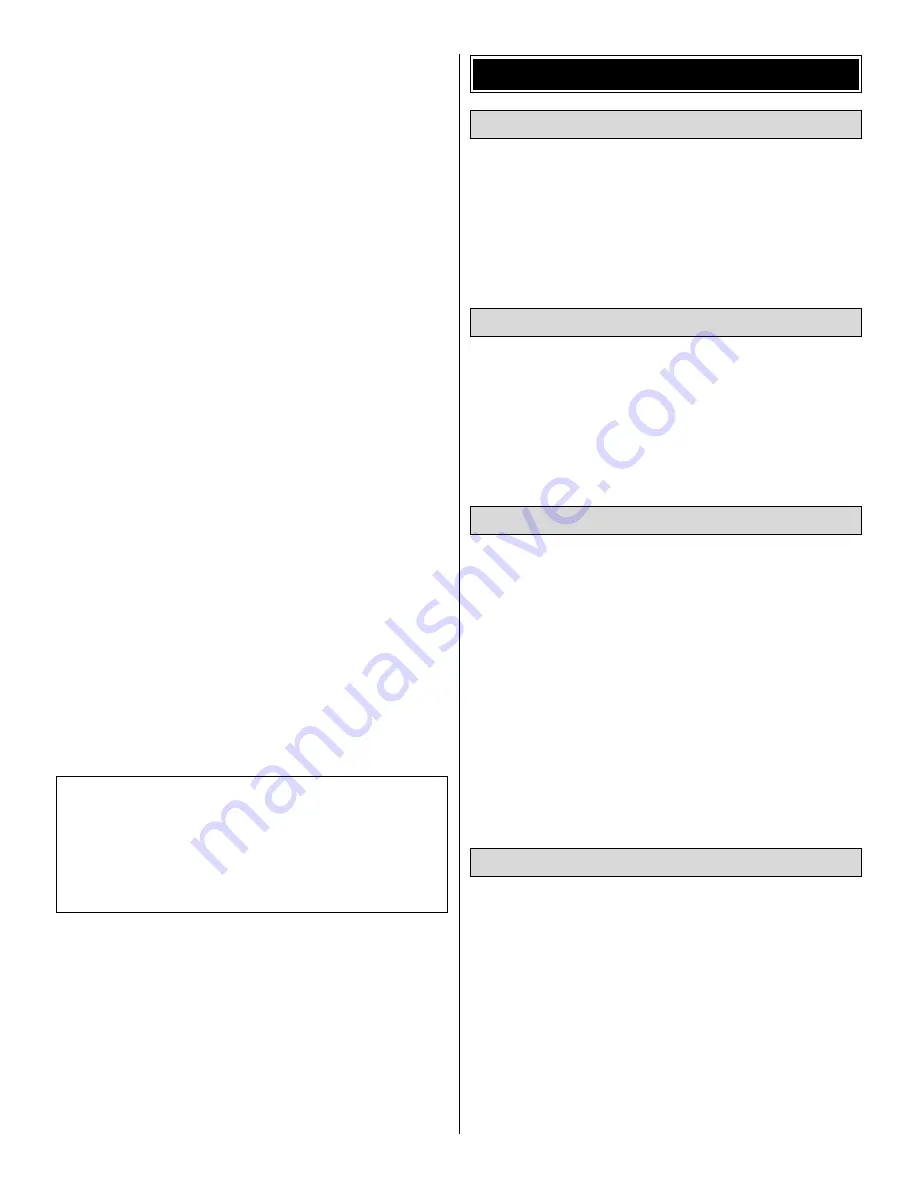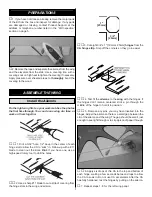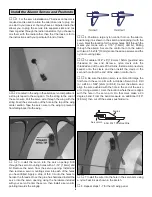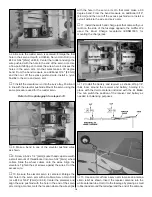
3. You must take time to build straight, true and strong.
4. You must use an R/C radio system that is in first-class
condition and a correctly sized engine and components (fuel
tank, wheels, etc.) throughout the building process.
5. You must correctly install all R/C and other components so
that the model operates correctly on the ground and in the air.
6. You must check the operation of the model before every
flight to insure that all equipment is operating and that the
model has remained structurally sound. Be sure to check
clevises or other connectors often and replace them if they
show any signs of wear or fatigue.
7. If you are not an experienced pilot or have not flown this
type of model before, we recommend that you get the
assistance of an experienced pilot in your R/C club for your
first flights. If you’re not a member of a club, your local hobby
shop has information about clubs in your area whose
membership includes experienced pilots.
8. While this kit has been flight tested to exceed normal
use, if the plane will be used for extremely high stress flying,
such as racing, or if an engine larger than one in the
recommended range is used, the modeler is responsible for
taking steps to reinforce the high stress points and/or
substituting hardware more suitable for the increased stress.
9. WARNING: The cowl and wheel pants included in this kit
are made of fiberglass, the fibers of which may cause eye,
skin and respiratory tract irritation. Never blow into a part
(wheel pant, cowl) to remove fiberglass dust, as the dust will
blow back into your eyes. Always wear safety goggles, a
particle mask and rubber gloves when grinding, drilling and
sanding fiberglass parts. Vacuum the parts and the work
area thoroughly after working with fiberglass parts.
Remember: Take your time and follow the instructions to
end up with a well-built model that is straight and true.
❏
Four channel radio
❏
Four 54 oz-in servos and one 30 oz-in servo
❏
One 6" [150mm] servo extension (HCAM2701 for Futaba
®
)
❏
Y-harness (HCAM2751 for Futaba)
❏
500 mAh battery or greater
❏
Propeller
The recommended engine size range for the CAP 580 is 46
- .61 cu in [7.5 - 10cc] two-stroke or .52 - .70 cu in [8.5 -
11.5cc] four-stroke. If an engine in the upper end of the size
range is used, remember that this is a scale model that is
intended to fly at scale-like speeds, so throttle management
should be practiced.
In addition to common household tools and hobby tools, this
is the “short list” of the most important items required to build
the CAP 580 .40 - .70 ARF.
Great Planes Pro
™
CA and
Epoxy glue are recommended.
❏
1/2 oz. [15g] Thin Pro CA (GPMR6001)
❏
1 oz. [30g] Medium Pro CA+ (GPMR6008)
❏
Pro 30-Minute Epoxy (GPMR6047)
❏
Drill bits: 1/16" [1.6mm], 5/64" [2mm], 7/64" [2.8mm],
3/16" [4.8mm].
❏
#11 Blades (5-pack, HCAR0211)
❏
R/C Foam Rubber (1/4" [6mm] - HCAQ1000
❏
3' [900mm] Standard Silicone Fuel Tubing (GPMQ4131)
❏
CA Applicator Tips (HCAR3780)
Here is a list of optional tools mentioned in the manual that
will help you build the CAP 580.
❏
2 oz. [57g] Spray CA Activator (GPMR6035)
❏
R/C-56 Canopy Glue (JOZR5007)
❏
CA Debonder (GPMR6039)
❏
Pro 6-Minute Epoxy (GPMR6045)
❏
Epoxy Brushes (6, GPMR8060)
❏
Mixing Sticks (50, GPMR8055)
❏
Mixing Cups (GPMR8056)
❏
Builder’s Triangle Set (HCAR0480)
❏
Curved-Tip Canopy Scissors for Trimming Plastic Parts
(HCAR0667)
Optional Supplies and Tools
Adhesives and Building Supplies
Engine
Hardware and Accessories
ADDITIONAL ITEMS REQUIRED
We, as the kit manufacturer, provide you with a top quality,
thoroughly tested kit and instructions, but ultimately the
quality and flyability of your finished model depends on
how you build it; therefore, we cannot in any way
guarantee the performance of your completed model and
no representations are expressed or implied as to the
performance or safety of your completed model.
3




































